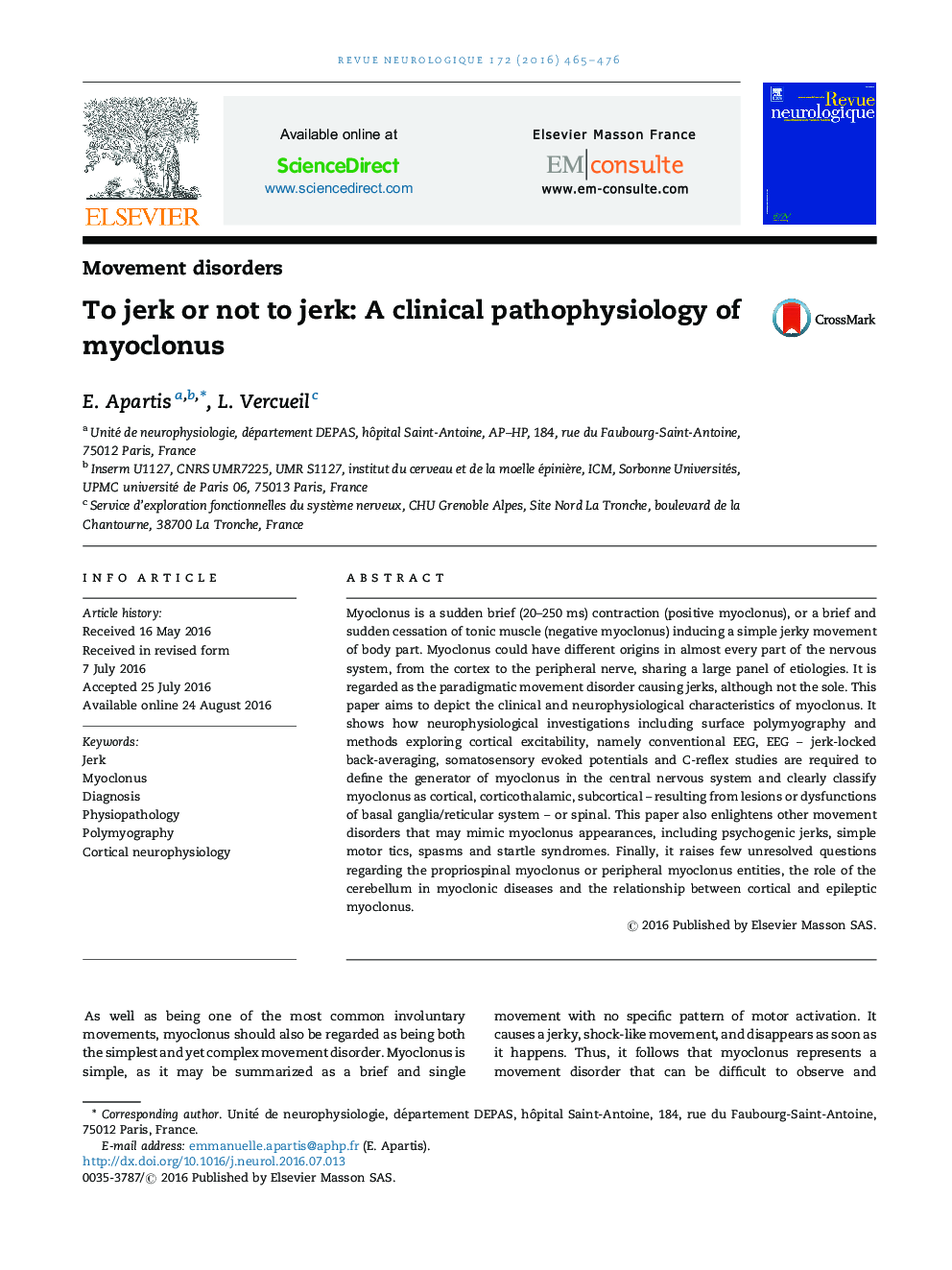| کد مقاله | کد نشریه | سال انتشار | مقاله انگلیسی | نسخه تمام متن |
|---|---|---|---|---|
| 5633433 | 1581308 | 2016 | 12 صفحه PDF | دانلود رایگان |
Myoclonus is a sudden brief (20-250 ms) contraction (positive myoclonus), or a brief and sudden cessation of tonic muscle (negative myoclonus) inducing a simple jerky movement of body part. Myoclonus could have different origins in almost every part of the nervous system, from the cortex to the peripheral nerve, sharing a large panel of etiologies. It is regarded as the paradigmatic movement disorder causing jerks, although not the sole. This paper aims to depict the clinical and neurophysiological characteristics of myoclonus. It shows how neurophysiological investigations including surface polymyography and methods exploring cortical excitability, namely conventional EEG, EEG - jerk-locked back-averaging, somatosensory evoked potentials and C-reflex studies are required to define the generator of myoclonus in the central nervous system and clearly classify myoclonus as cortical, corticothalamic, subcortical - resulting from lesions or dysfunctions of basal ganglia/reticular system - or spinal. This paper also enlightens other movement disorders that may mimic myoclonus appearances, including psychogenic jerks, simple motor tics, spasms and startle syndromes. Finally, it raises few unresolved questions regarding the propriospinal myoclonus or peripheral myoclonus entities, the role of the cerebellum in myoclonic diseases and the relationship between cortical and epileptic myoclonus.
Journal: Revue Neurologique - Volume 172, Issues 8â9, AugustâSeptember 2016, Pages 465-476
